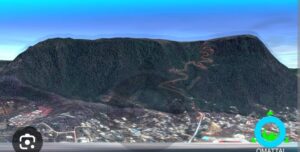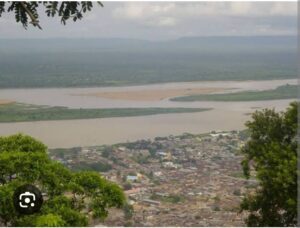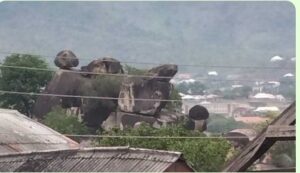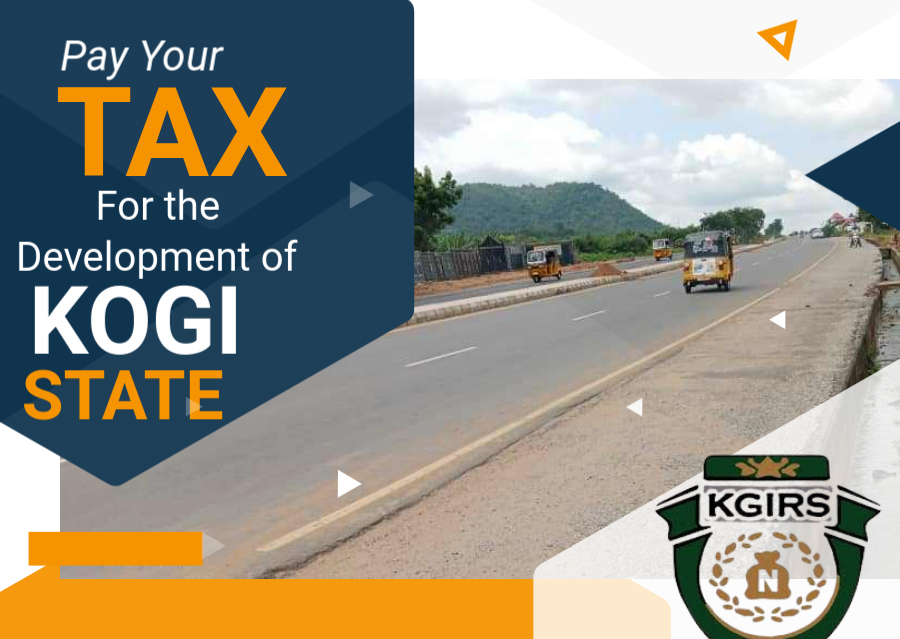

— As tourism experts tour tourism sites and potential across the state.
By Otori Ozigi and Dawud Ahmed.

Governor Ahmed Usman Ododo of Kogi State.
In keeping with his resolve to diversify the economy of Kogi State, the innovative and result-oriented Executive Governor of Kogi State, Alhaji Ododo Ahmed Usman, has commissioned tourism experts to commence, on the spot assessment, of all tourism sites and potential across the state.

The leader of the team touring tourism sites in kogi state, Hajia Bilqis Abdul.
She is also the Chief Executive Officer of Bboog Travels and Tours Operators.
The team is led by Hajia Bilqis Abdul, the President of Nigerian women in MICE, and a former National President of Nigeria Association of Tour Operators, NATOP,who is also the Chief Executive Officer of Bboog Travels and Tours Ltd, Abuja.

Mounti patti, the highest point in Kogi State over 1,500 feet above the sea level.
They have successfully visited some tourism sites in Kogi West and Kogi Central as 24th, February,2024.

There is no gainsaying that Kogi State is blessed with abundant tourism potentialities across the three senatorial districts of the state.

The confluence point near Lokoja.
(C). hotels.ng
One of the tourism attractions in Lokoja waiting for tourists’attraction is the mount pati.

The mountain, which is 1,500 feet above sea level,is overseeing the site where River Niger and Benue and form confluence in Lokoja.
For many first-time visitors to Lokoja, the capital of Kogi State, the city elicits some kind of excitement as the location where Rivers Niger and Benue, the Nigeria’s two most prominent rivers meet and flow peacefully as one indivisible entity.
The confluence of the two rivers aptly explains why Kogi State is generally referred to as “the confluence state”.
The first flyover in the history of kogi state,a geo-political expression created on August 27,1991, was built by Governor Bello Yahaya Adoza Bello, the immediate past Governor of the state.
The confluence, which is widely recognized for its tourism potential, is figuratively described by some observers as the “heart of Nigeria’’ because of its geographical location in the country.
One of the amazing rocks in kogi state located on 200 unit axis of Lokoja -Gadumo-Ganaja road,Lokoja.
However, Abraham Onotu, a tourism expert, is quick to point out that the confluence of the Niger and Benue rivers at Lokoja is not the only significant tourist attraction in Kogi State.
“Besides the confluence site, Kogi State has the latent possibility of becoming a tourist destination to millions of tourists within Nigeria and from overseas,” he says.
Onotu insists that the potential tourism sites in Kogi are numerous and capable of turning the state into a quality tourist retreat in the country,if such potentiality is effectively harnessed by the private and public sectors of the economy for the benefit of its citizens.
He says that Kogi State can be aptly described as “a state waiting to take its pride of place in the Nigerian tourism industry, in view of its abundant tourist attractions’’.
Onotu calls on the state government to champion the drive to exploit the potential tourist resources of Kogi in collaboration with the private sector.
However, that is not to suggest that tourists are not aware of the tourism treasures of Kogi as sharp-eyed tourists have been visiting the state in their leisure time.
For instance, Miss Bridget Thomas, a Briton, is one of such tourists who once visited Lokoja’s dormant tourism sites.
Bridget’s primary destination was one the residence of Lord Fredrick Lugard, Nigeria’s first Governor-General who spearheaded the amalgamation of the northern and southern protectorates of Nigeria in 1914.
The edifice, now within the premises of the Nigeria Union of Journalists (NUJ) Press Centre, Lokoja. Records indicate that it was one of the quarters of senior officials in the colonial regime which now serves as a relaxation spot for journalists and other members of the public.
Tourist enthusiasts say the historic edifice is a shadow of itself and in dire need of serious structural uplift as part of effort to preserve the colonial legacies abundant in Lokoja,one time capital of colonial government in Nigeria.
On the day, a British national, Bridget visited the colonial staff quarters, she met some journalists wining and dining at the recreation spot and she promptly disclosed her mission.
“I am the great-grandchild of a colonial administrator who lived in Lokoja in the 1920s,’’ she said, adding: “I am here to conduct research into colonial artefacts in Lokoja, with particular reference to the building where my great-grandfather lived in those days.’’
Bridget carried out a guided tour of the building and after a 20-minute inspection; she excitedly called on the federal and state governments to develop the the edifice which the last major renovation was carried out in 1938, according to historical records.
This she believes will give the historic structure a befitting face lift and its adjacent buildings with a view to turning them into a tourist sites, because of their historical value to the history of colonialism in Nigeria.
“Since I came here, I have seen many potential of tourism sites in Lokoja which could be developed to generate substantial revenue,’’ a visibly elated Bridget said.
Many tourism experts agree with Bridget’s sentiments, saying that Kogi State has many potential tourist sites that can be developed and marketed.
Onotu says that such sites include the locations where some slaves were freed from the clutches of slave merchants in the 18th and 19th centuries, the spot where the flag of the Royal Niger Company was lowered in 1900 and the Rest House of Lord Lugard on top of Patti hill.
Others tourism sites, according to another tourism advocate, Peter Duniya, include the Lokoja Club that was built in 1901 by Lord Lugard, the “European Cemetery’’ in Lokoja which contains the tombs of European and African soldiers of the West African Frontier Force (WAFF), as well as tombs of some 17th Century missionaries.
Duniya says that some other sites with enormous tourism potential include the cenotaph that was erected in remembrance of British and Nigerian soldiers .
The team is expected to move to tourism sites in Bassa, Alamabro and Ofu and other historic sites in Kogi East this coming week.
On the whole,it is evidently clear that Kogi State has great potential in tourism sector, and should be properly harnessed in the years besides shooting the image of the state to the outside world and attract local and foreign tourists, the move will boost investment in the tourism sector of the state as well as increase its internally generated revenue (IGR) among other dividends.
Otori Ozigi and Dawud are veteran journalists and media consultants based in Lokoja, Kogi state.



